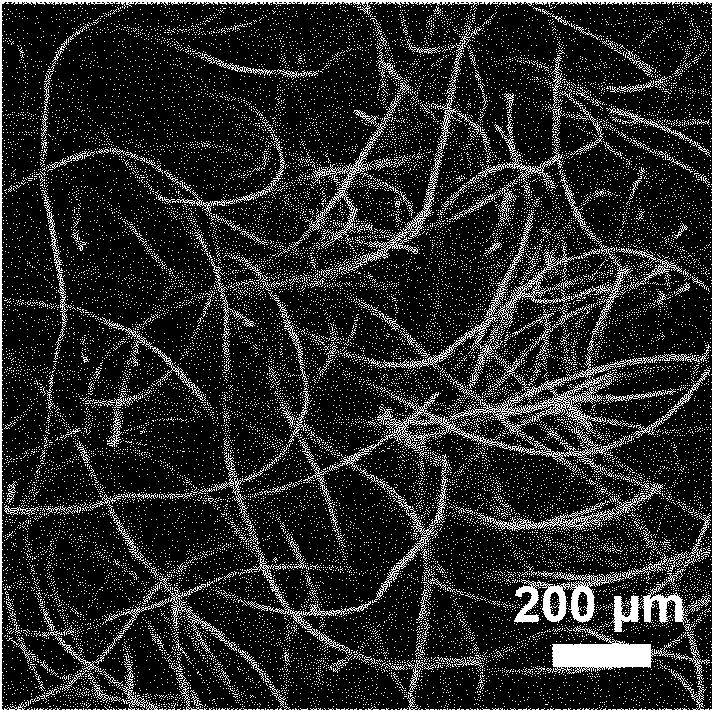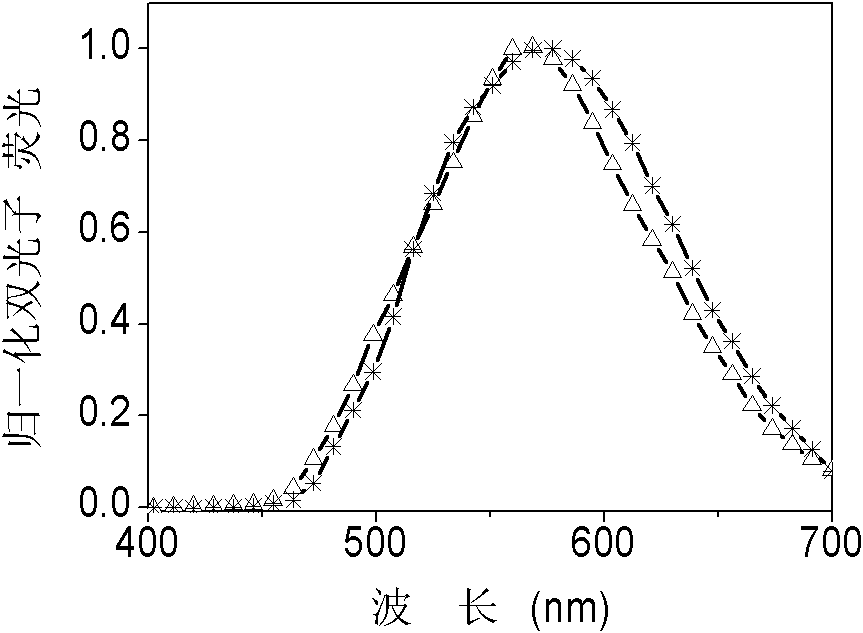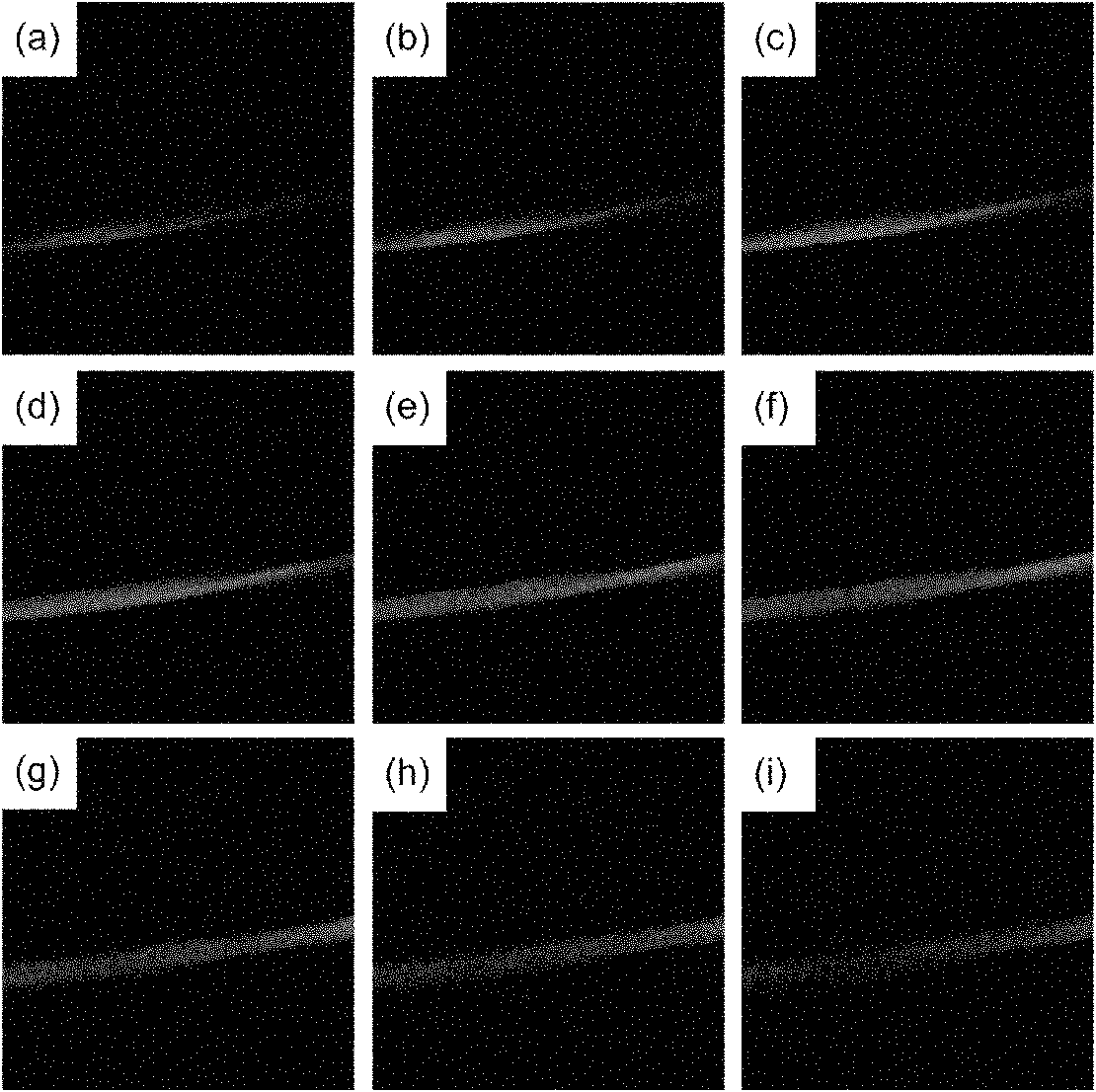Two-photon fluorescent bio-silk material and preparation method thereof
A two-photon fluorescence and biofilament technology, which is applied in the direction of luminescent materials, rayon manufacturing, chemical instruments and methods, etc., can solve the problems of large photodamage, achieve stable interaction, improve detection depth and sensitivity, and good mechanical properties Effect
- Summary
- Abstract
- Description
- Claims
- Application Information
AI Technical Summary
Problems solved by technology
Method used
Image
Examples
Embodiment 1
[0040] Two-photon Fluorescent Molecules Containing Nitrofluorene Derivatives Synthesized
[0041]
[0042] The silk comes from Liangguang No. 2 silkworm variety. Contains soap for silk raw silk (10g·L -1 ) and sodium carbonate (5g·L -1 ) solution at 85°C for 45 minutes, then washed and degummed with distilled water, and dried naturally. Due to the strong polarity of the nitro groups at both ends of the molecule, they can form hydrogen bonds with the carbonyl groups on the protein molecular chain. At 60-110° C., 1 g of silk fiber / fabric and 0.04 g of the above-mentioned two-photon fluorescent organic molecule are sealed and stirred in 20 mL of dimethyl sulfoxide (DMSO) solution for 30-100 minutes. Take out the silk, wash it with distilled water ultrasonic wave, and dry it to obtain two-photon fluorescent silk.
[0043] By z-scan method, we got 2,7-dinitrostyryl-9,9'-dibutylfluorene and 2,7-dinitrostyryl-9,9'-dioctyl The two-photon absorption cross sections of fluorene a...
Embodiment 2
[0046] Silkworm cocoons from Liangguang No. 2 silkworm variety were used, and the cocoons were cut into pieces and treated with 0.05% (w / v) NaHCO 3 The solution was washed at 100°C for 50 minutes to remove sericin, then washed several times with deionized water, and dried naturally. Dissolve the obtained dried silk fibers in 9.3 mol / L LiBr solution at 40° C., and then precipitate LiBr in distilled water by dialysis to obtain a silk protein solution. The concentration of silk protein was determined to be ~4.0 wt.% by weighing method.
[0047] Add 0.5mL containing 0.5mg 2,7-dibromo-9,9-dibutylfluorene or 2,7-dinitrostyryl-9,9'-dioctylfluorene dimethyl to the above silk protein solution base sulfoxide (DMSO) solution, mixed evenly to obtain a yellow transparent fluorescent silk protein solution. At room temperature, two-photon fluorescent silk protein gel was obtained after 10-100 h ( Image 6 ).
[0048] Take 1mL of the above-mentioned yellow transparent two-photon fluoresce...
Embodiment 3
[0051] Under the protection of nitrogen atmosphere, 1 g of silk fiber / fabric, Rhodamine B (2.0 mmol, 958 mg) and a catalytic amount of DMAP were dissolved in dry anhydrous DMSO (25 mL), and cooled in an ice-water bath at 0 °C. A solution of DCC (2.2 mmol, 454 mg) in dichloromethane (5 mL) was added dropwise into the above solution with stirring. Gradually raise the reaction temperature to room temperature and stir the reaction for 6-10 h. The silk was taken out, washed with dichloromethane and distilled water ultrasonically, and dried to obtain single-photon fluorescent silk. The reaction formula is as follows:
[0052]
PUM
 Login to View More
Login to View More Abstract
Description
Claims
Application Information
 Login to View More
Login to View More - R&D
- Intellectual Property
- Life Sciences
- Materials
- Tech Scout
- Unparalleled Data Quality
- Higher Quality Content
- 60% Fewer Hallucinations
Browse by: Latest US Patents, China's latest patents, Technical Efficacy Thesaurus, Application Domain, Technology Topic, Popular Technical Reports.
© 2025 PatSnap. All rights reserved.Legal|Privacy policy|Modern Slavery Act Transparency Statement|Sitemap|About US| Contact US: help@patsnap.com



